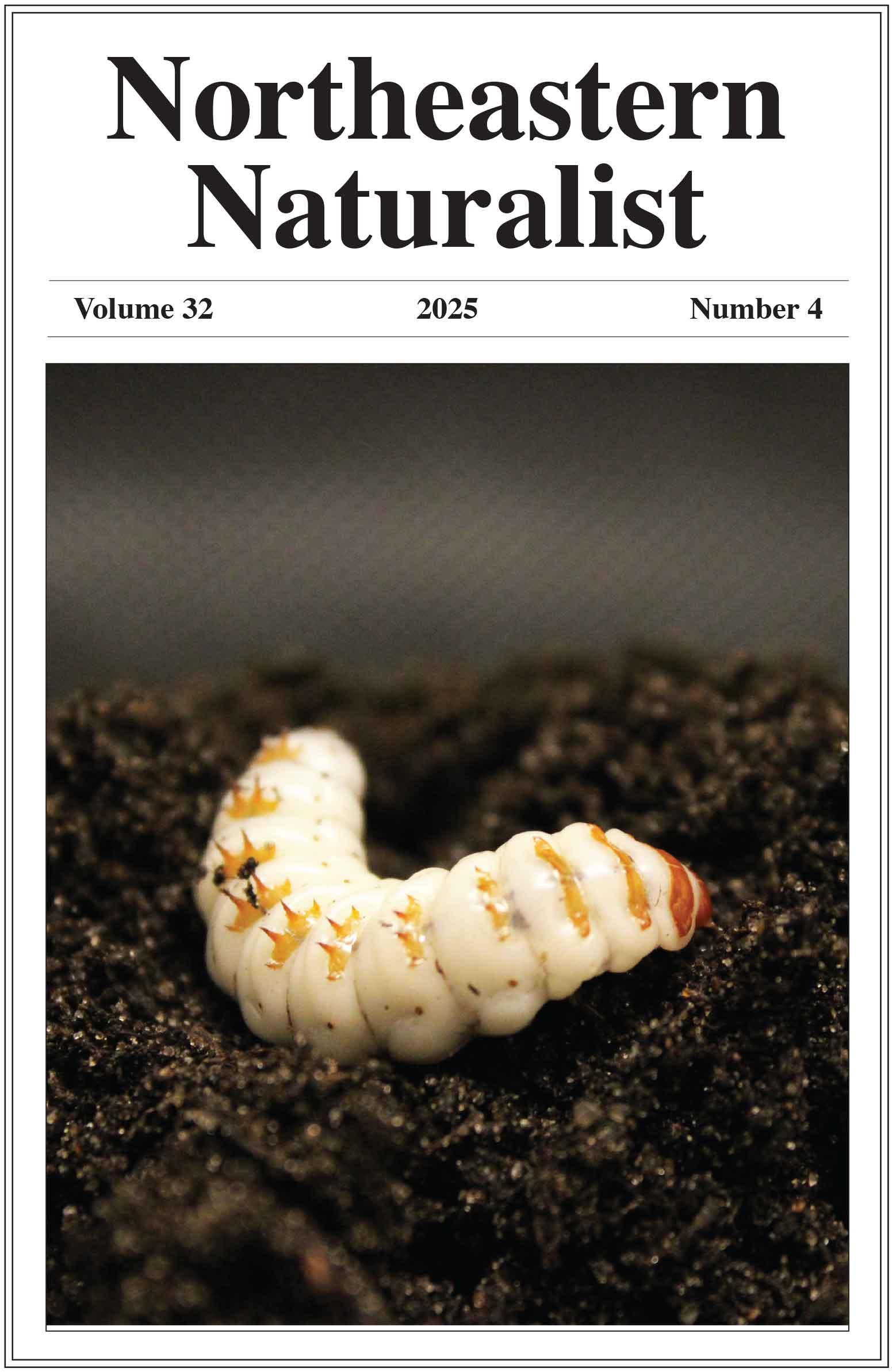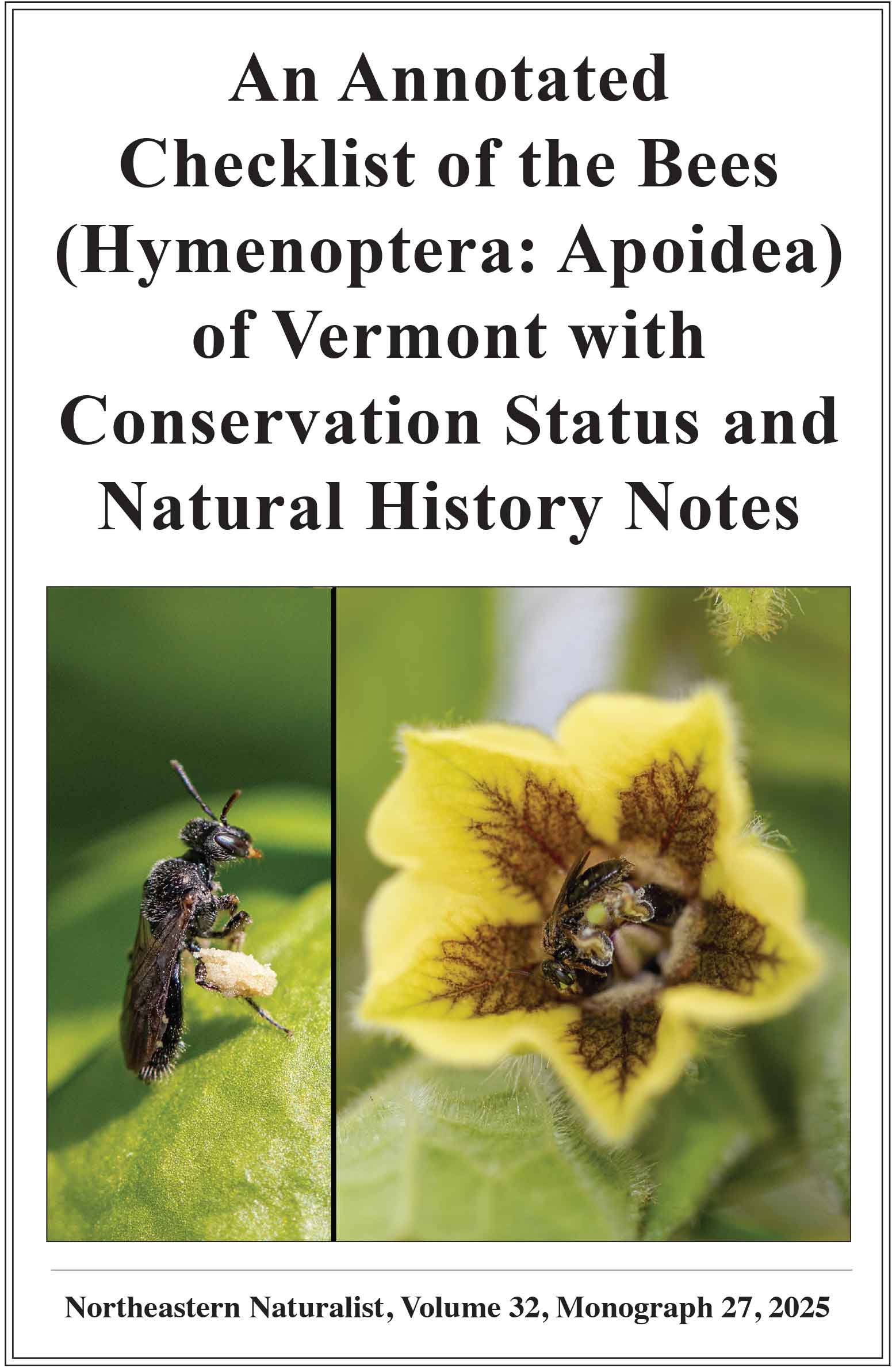Reassessment of Three Spotted Turtle (Clemmys guttata) Populations Reveals Spatial Variation in Population Size and Survival
Lisabeth L. Willey1,2,3,*, Michael T. Jones4,5, H. Patrick Roberts3,5, and Joan Milam5
1Environmental Studies Department, Antioch University New England, Keene, NH 03431. 2Current address - Science Applications Program, Northeast Region, US Fish and Wildlife Service, 300 Westgate Center Drive, Hadley, MA 01035. 3American Turtle Observatory, 90 Whitaker Road, New Salem, MA 01355. 4Massachusetts Natural Heritage and Endangered Species Program, Division of Fisheries and Wildlife, 1 Rabbit Hill Road, Westborough, MA 01581. 5Department of Environmental Conservation, University of Massachusetts, Amherst, MA 01003. *Corresponding author.
Northeastern Naturalist, Volume 31, Special Issue 12: C57–C75
First published early online: 8 March 2025
Abstract
Clemmys guttata (Spotted Turtle) is a widespread species of regional conservation concern throughout the eastern United States and Canada, relying upon mosaics of upland and wetland habitats. Spotted Turtles exhibit late maturity and low annual reproductive potential; as a result, many populations are vulnerable to decline and reduced connectivity due to elevated rates of anthropogenic disturbance and mortality. We assessed 3 Spotted Turtle populations that were initially studied between 1989 and 1995 on patchworks of private and public (watershed and state forest) land using mark–recapture methods and a combination of open- and closed-population models. During the initial studies, the 3 populations were estimated to support 98, 18, and 43 turtles, respectively. Our population models for the same sites during 2018 or 2019 provided estimates of 92.3, 25.8, and 36.6 turtles, respectively, suggesting limited evidence of growth or decline over more than 25 years at all 3 sites, though fluctuations were observed. We attribute the lack of significant change in population size at these sites to their landscape context: all 3 are situated within areas >600 ha with no public road access, allowing turtles to shift habitat in response to vegetation succession, hydrological shifts, or other changes and buffering them against roadkill or other anthropogenic threats. We also documented variation in population parameters across both space and time; for example, annual survival estimates varied from 0.924 to 0.986 at the sites, emphasizing the need for locally specific information and long-term studies to inform conservation decisions at both the site and species level.
![]() Download Full-text pdf (Accessible only to subscribers. To subscribe click here.)
Download Full-text pdf (Accessible only to subscribers. To subscribe click here.)
Access Journal Content
Open access browsing of table of contents and abstract pages. Full text pdfs available for download for subscribers.
Issue-in-Progress: Vol. 33(1) ... early view
Check out NENA's latest monograph and Special Issue:













 The Northeastern Naturalist is a peer-reviewed journal that covers all aspects of natural history within northeastern North America. We welcome research articles, summary review papers, and observational notes.
The Northeastern Naturalist is a peer-reviewed journal that covers all aspects of natural history within northeastern North America. We welcome research articles, summary review papers, and observational notes.